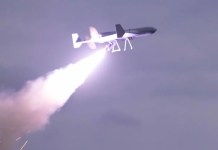The news of relentless India-China border tensions and all other dispute that China has with its neighbours like Taiwan, Japan, ASEAN nations has got the world standing against Beijing, including the US.
US-China Tensions: US Wants India To ‘Match Its Weight By Actions’ In The South China Sea – Experts
In the east, across the pacific is the raging US-China confrontation. Tensions are running high close to home in Taiwan as the Chinese are stepping up the military action around the region. Muscle flexing in the South China Sea has been ongoing for a while now and tensions are high in Hong Kong, the semi-autonomous region, over the new national security law, confronting Japan over disputed islands and the frequent border skirmishes with India – all of it while fighting the coronavirus outbreak.
According to experts, China’s superpower dreams might not become a reality especially with its ongoing conflict with a global superpower, the US.
“Fighting India with sticks and stones on the high plateau of Ladakh comes cheap, but preparing to confront the United States in the Western Pacific is a very expensive proposition indeed,” wrote Salvatore Babones, an adjunct scholar at the Centre for Independent Studies in Sydney.
“It is likely to prove a luxury that a slow-growth, post-coronavirus China will not be able to afford. China makes a great show of its wealth and its willingness to spend it. In reality, Beijing’s bank balance doesn’t match its bling,” he added.
China’s economic growth had slowed down even before the coronavirus outbreak. China reported the weakest numbers for 2019, in the last 30 years in the wake of the US-China trade war. China’s growth slowed to 6.1% last year, from 6.6% in 2018, according to the official data.
However, Brooking institution suggests that China overestimated Gross Domestic Product (GDP) growth by an average of 1.7 percent per year.
“The United States famously spends more on defence than the next 10 countries combined, yet the notion persists that its military is still underfunded and underequipped for its global superpower role,” stated Babones.
He further explained that if the experts are to be believed, the United States will lose its competitive edge without more investment in university research, advanced technologies, foreign aid, diplomacy, the United Nations, clean energy, and, of course, pandemic preparedness.
“The US—with an economy roughly 50 per cent larger than China’s and a GDP per capita more than six times as great—can’t afford to remain a global superpower, how can China possibly afford to become one?” he asked.
Analyses from the Center for Strategic and International Studies suggest that Chinese defence spending may actually fall in real terms in 2020. Given China’s elevated pace of military operations on several borders, spending constraints must be putting pressure on acquisitions budgets.
“China is believed to have built only 50 or so J-20 fifth-generation stealth fighters. The J-20 program now seems to be experiencing serious development problems, limiting production for the foreseeable future. This compares to America’s stock of 195 F-22 and 134 F-35 fifth-generation fighters, with continuing annual production of more than 100 F-35s, even after coronavirus delays,” explained the author.
The author concluded by saying that China’s leaders can at least save face by abandoning their GDP targets and blaming the virus for the inevitable austerity to follow. He predicted that when the coronavirus crisis is over, the US will still be a global superpower while China’s dreams might still remain far fetched.




